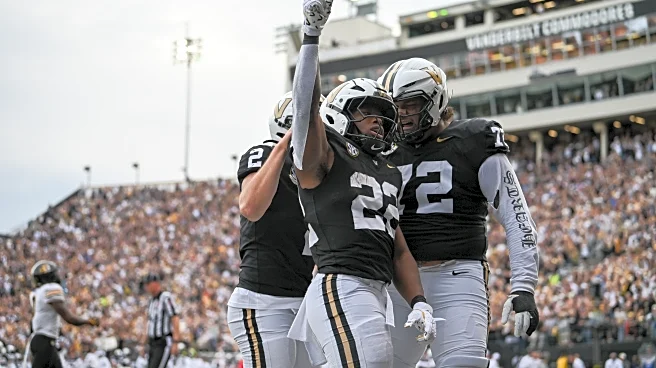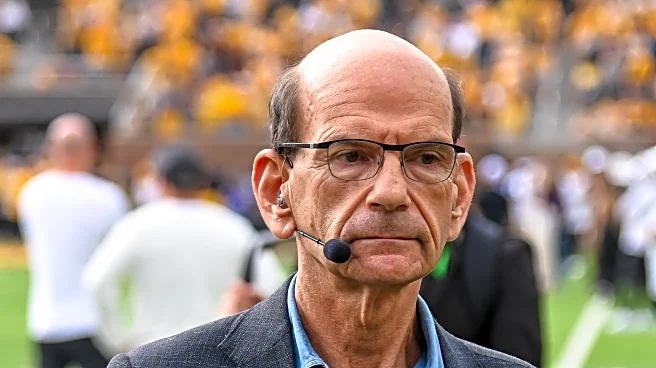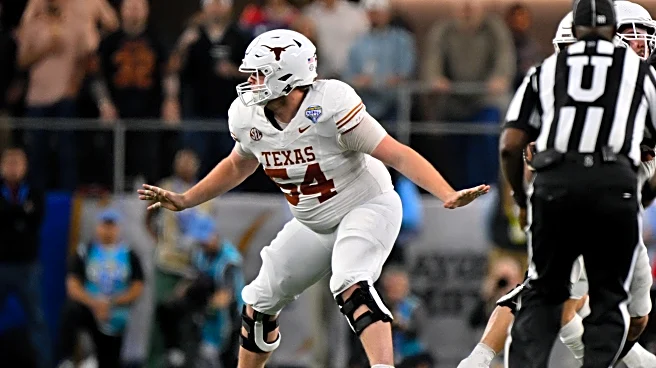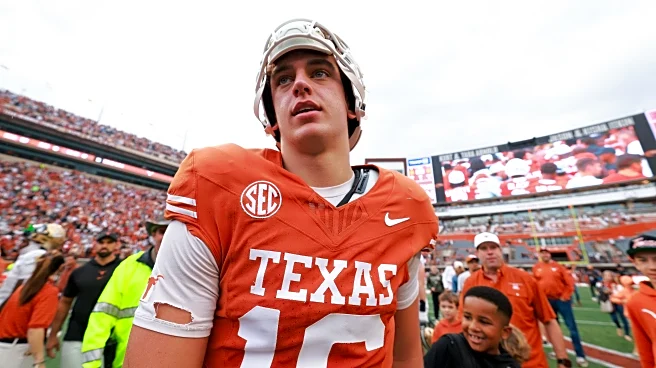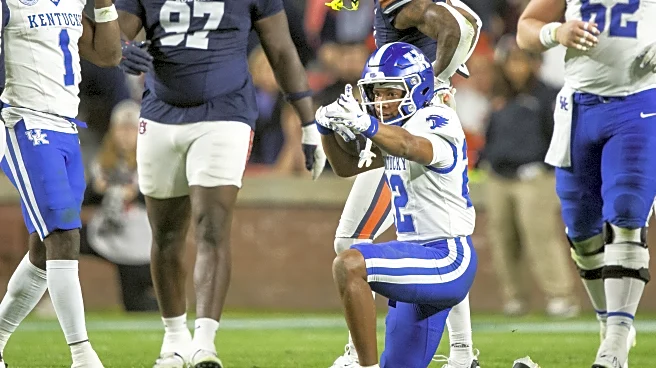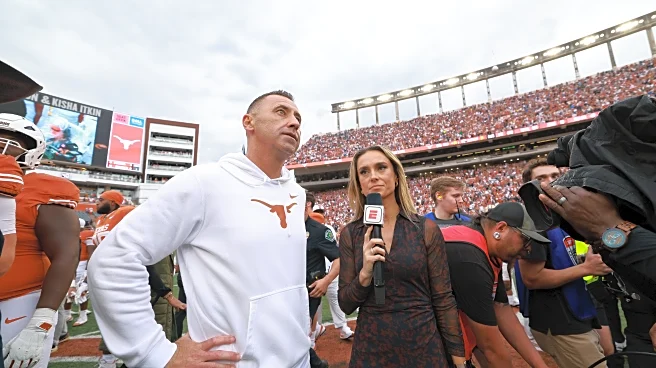AUSTIN, Texas — “Is Arch Manning’s college football first flop?”
The question posed by The Athletic after the Texas Longhorns suffered a bad defeat at the hands of the Florida Gators in Gainesville in early
October was absurd on its face — there have quite obviously been numerous high-profile flops in college football, especially at the quarterback position — but also reflected the developing narrative around the highly-touted redshirt sophomore in the midst of a poor beginning to his career as the starter for the Longhorns.
Perhaps no player in the modern era has been more scrutinized than Manning, who struggled with his accuracy and decision making as the entire offense struggled with its operation, issues that went all the way to head coach Steve Sarkisian, as diminished returns forced him to field questions about whether he’s considered giving up his play-calling duties.
All of a sudden, however, Manning is playing the type of football he was expected to play, helping Texas rip off four straight wins and vault back into College Football Playoff contention at No. 11 in the initial rankings released on Tuesday.
“Arch will tell you that where he is today is not where he was a month ago,” Sarkisian said after Saturday’s 34-31 win over then-No. 9 Vanderbilt.
Where Manning is today is 54-of-79 passing (68.4 percent) for 674 yards and six touchdowns over the last two games, including an efficient 25-of-33 passing performance for 328 yards and three touchdowns against the Commodores.
“I thought Arch played a fantastic game,” Sarkisian said on Monday. “Going back and really watching the tape now numerous times, he was very efficient. I thought he threw the ball extremely accurately. It’s one thing not to throw the ball down the field all the time, but you got to put players in position to make plays with the ball in their hands,
Significant overall improvement often comes from incremental gains in multiple areas.
Early in the season, one apparent gap between Manning and former quarterback Quinn Ewers was Manning’s accuracy on screen passes, throws that Ewers made at an elite level, consistently hitting receivers in stride to allow them to make plays after the catch.
Evidence of Manning’s growth came on the first play against Vanderbilt on a swing pass to sophomore wide receiver Ryan Wingo in motion that set up the 6’2, 210-pound speedster to break a tackle behind the line of scrimmage and rip off a 75-yard touchdown behind strong blocking from wide receivers DeAndre Moore Jr. and Emmett Mosley.
“Ryan doesn’t have to break stride to catch that ball to go break those tackles, and there were numerous plays like that in the game, so he’s playing at a high level force right there,” Sarkisian said.
It’s also evidence of an improved overall operation for the Longhorns — an effective opener called by Sarkisian to combat the nickel blitzes used by opponents against the Horns in recent weeks with the explosive play enabled by better perimeter blocking that is starting to match the coaching staff’s preseason expectations.
On nine screens against Vanderbilt, Manning completed six passes for 65 yards as Texas had to overcome two drops, affording Manning easy completions and allowing the offense to stay on schedule and slow down an effective pass rush for the Commodores that was ultimately unable to record a sack in Saturday’s win by the Longhorns.
Manning’s maturation making pre-snap adjustments to protections have helped reduce pressure on him, enabling a higher completion percentage and fewer plays behind the chains.
“He did some things in protection to pick some things up to allow us to throw it down the field,” Sarkisian said.
Keeping redshirt junior Connor Robertson at center while moving senior Cole Hutson to left guard in his return from injury helped stabilize an offensive line that allowed pressure on Manning too frequently because of busted assignments and poor technique.
“This was the best protection he’s gotten all year and that’s a credit to everybody,” Sarkisian said after the Vanderbilt win.
Because Manning is receiving better protection, he’s been more capable going through his reads because he’s able to maintain his eye discipline instead of dropping his eyes to the pass rush, a bad habit that Manning developed in high school playing behind a porous offensive line at Isidore Newman.
“When you can get to your second, third reads in a progression, that means your protection is pretty good,” Sarkisian said.
One throw to Mosley that went for an 18-yard gain early in the third quarter featured Manning working to his fourth read thanks to a clean pocket.
From a mechanical standpoint, Manning’s own operation looks much more clean than it did earlier in the year when regularly misfired passes raised questions about the health of his shoulder. Even as recently as the Kentucky, Manning had two egregious bouts of inaccuracy, missing Wingo on a crossing route on a critical third down and delivering an off-target throw intended for junior tight end Jack Endries that killed momentum he’d just generated by hitting Mosley for a big gain.
Just as Manning’s eye discipline broke down earlier in the season because of frequent pressure, his mechanics were breaking down, ranging from poor footwork before starting his throwing motion to overstriding to speeding up and then slowing down his delivery after starting his throwing motion, causing his arm to get short.
“Young quarterbacks, when the speed of the game around him you can tell is almost too fast and they’re not comfortable, they do one of two things — they either speed themselves up so fast where they’re ahead of the timing of the offense or they’re so slow that they’re behind the timing of the offense,” FOX analyst Joel Klatt said in September.
Especially over the last two games, the Texas quarterback is getting his sequencing right on his throw to give his receivers chances to make plays, aided by a decrease in Manning’s average depth of target, which reached 20.2 yards in the loss to Florida before decreasing to 4.0 yards against Oklahoma and only ticking up to 8.4 yards in the Mississippi State comeback despite the deficit.
“At some point I do think it’s going to click, the timing is going to click, and I think he’s going to play a lot better, and he’ll throw the football a hell of a lot more accurately than what he’s doing right now,” Klatt predicted with accuracy.
Not only is the football going where Manning wants it to much more consistently, he’s making better decisions with it. An interception on three turnover-worthy throws against San Jose State in the home opener was evidence of Manning’s poor start, bad decision making that persisted into the SEC opener against Florida in Gainesville when frequent pressure contributed to five turnover-worthy throws resulting in two interceptions by the Gators.
Over the current four-game winning streak, however, Manning has only made one turnover-worthy throw, escaping a bad decision in the win over Oklahoma. The only interception over that stretch came on a tipped pass against Mississippi State that redshirt freshman wide receiver Parker Livingstone needed to play better.
So that’s one interception over 133 throws, a remarkable interception rate of 0.75 percent that stands in stark contrast to the five interceptions over his first 136 throws, a poor interception rate of 3.7 percent.
The decision making by Manning is all the more impressive because of the adversity he faced in the comeback win over Mississippi State when Texas faced two 17-point deficits and needed everything to go right, the type of circumstances that often lead to quarterbacks putting the ball at risk out of desperation.
Instead, Manning made one of the best throws of his career, converting an important 3rd and 10 late in the third quarter by rolling left and bombing a 62-yard completion to Wingo that traveledd 53 yards in the air.
That’s the Manning that everyone expected to see this season.
For the Longhorns quarterback, the ability to maintain his poise on the field is a reflection of his ability to maintain poise off the field by avoiding distractions and keeping his sense of humor.
“I feel like I try to do my best to block out the noise and then I get 100 text messages, ‘Keep blocking out the noise,‘ like, there must be a lot of noise,” Manning joked last month.
There is a lot of noise, and Manning has figured out how to tune it out, get into sync with the Texas offense, and start producing high-level play that reflects his talent level, beginning the process of consigning The Athletic’s incendiary question to the internet annals of freezing cold takes.



